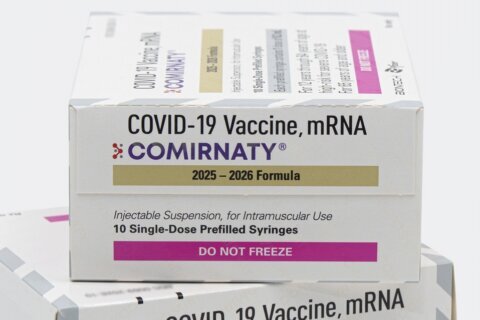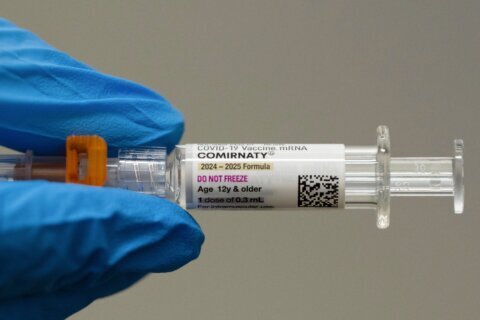There’s more and more demand for at-home rapid COVID-19 testing, and they’re hard to find, although the launch of a federal website should help. But how reliable are the tests?
“People need to first think about what question they’re asking of the test,” said Dr. Amesh Adalja, a senior scholar at the Johns Hopkins Center for Health Security. “One is, what am I sick with? And the other question is, am I safe to be around? Am I contagious? And when it comes to those tests you have to answer those questions a little bit differently.”
“If you’re using a test … to tell if you’re contagious, the tests are a very good marker for that,” he said. “They’re able to detect when you have enough virus in your mouth or in your nose to infect other people.”
So if you’re testing regularly just to be cautious, and aren’t showing any symptoms, then a negative test means you’re probably not contagious and fine to go about life.
But if you do have symptoms of being sick with something, and the test still comes back negative, it gets more complicated.
“You need to think about what you could be sick with,” Adalja said. It could mean getting tested for the flu or strep throat. You also might want to get a PCR test too.
“If you’re sick and the test is negative, you can’t just assume there’s nothing wrong with you,” he said. “A negative antigen test when you have symptoms is reassuring in the fact that you probably didn’t infect somebody at that time. So it’s reassuring meaning you didn’t put other people at risk.”
Because that’s what the at-home tests really test for — how infectious you are. If a PCR test comes back positive, it’s not that you had a “false negative” from the rapid test; you just weren’t contagious at the time.
“Contagiousness varies during your illness,” said Adalja. “You may not have been contagious at one point in time, but will become contagious at some point in time, and then become noncontagious again.
“The home tests are geared toward detecting enough virus in your nose or mouth for contagiousness,” he added. “It’s not going to be something that can pick up minute amounts of the virus. That’s not what it’s designed to do. So it’s not a ‘false negative.’ The test is performing as expected. It’s not the tests fault it’s just the performance characteristics of the test and the question you’re asking of the test.
“You can start with that test but you shouldn’t just stop with that test,” Adalja also said. “If it’s negative when you’ve got symptoms, you should still isolate until you figure out what’s wrong with you.”








